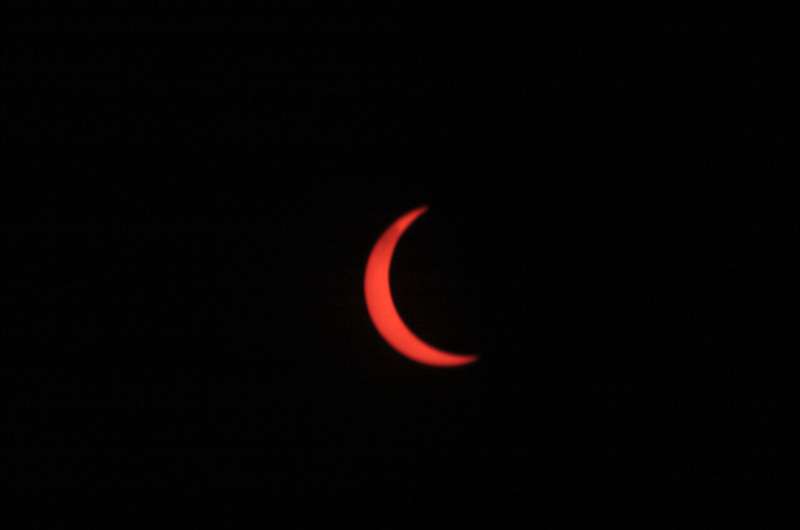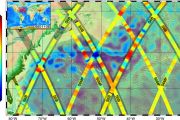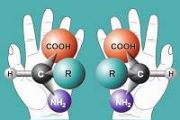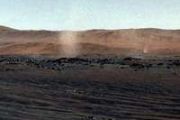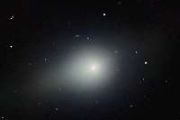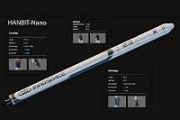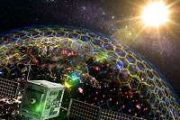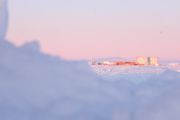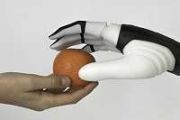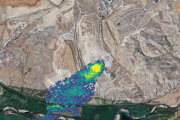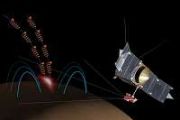
Copernical Team
Making Tracks up Marker Band Valley: Sols 3803-3804
 Curiosity is carefully and patiently driving up a local canyon, named Marker Band valley, across a variably tilting surface that is scattered with horizontally banded bedrock and patches of sand. Can you imagine how fun and challenging it would be to scramble up the pass over this bumpy, uneven, and sandy terrain?
As the rover continues her ascent up Marker Band valley, the rocks continue
Curiosity is carefully and patiently driving up a local canyon, named Marker Band valley, across a variably tilting surface that is scattered with horizontally banded bedrock and patches of sand. Can you imagine how fun and challenging it would be to scramble up the pass over this bumpy, uneven, and sandy terrain?
As the rover continues her ascent up Marker Band valley, the rocks continue Two Steps Forward, One Step Back: Sols 3805-3806
 To quote our project scientist, Ashwin, it was clear when we assessed our downlink that Curiosity had almost literally taken "two steps forward and one steps back" during the drive in our previous plan. It has been tricky for our intrepid Mars explorer as we have tried to pick our way through this small canyon as we exit marker band valley.
There are abundant large blocks that we are tryin
To quote our project scientist, Ashwin, it was clear when we assessed our downlink that Curiosity had almost literally taken "two steps forward and one steps back" during the drive in our previous plan. It has been tricky for our intrepid Mars explorer as we have tried to pick our way through this small canyon as we exit marker band valley.
There are abundant large blocks that we are tryin NASA selects NAU researcher for international mission to Martian moons
 A planetary scientist at NAU is part of a Japanese Aerospace Exploration Agency (JAXA) mission to travel to Mars and survey the planet's two moons, including collecting a sample from one and returning it to Earth.
Christopher Edwards, an associate professor in the Department of Astronomy and Planetary Science, received a six-year, $650,000 grant for the Martian Moons eXploration (MMX) miss
A planetary scientist at NAU is part of a Japanese Aerospace Exploration Agency (JAXA) mission to travel to Mars and survey the planet's two moons, including collecting a sample from one and returning it to Earth.
Christopher Edwards, an associate professor in the Department of Astronomy and Planetary Science, received a six-year, $650,000 grant for the Martian Moons eXploration (MMX) miss NASA releases agency strategy for planetary defense to safeguard Earth
 To help guide NASA's efforts over the next decade, the agency has released its Planetary Defense Strategy and Action Plan.
For three decades, NASA has engaged in studying near-Earth objects (NEOs), asteroids and comets that orbit the Sun and come within 30 million miles of our planet's orbit. While NEOs have the potential to help planetary scientists better understand the birth and formati
To help guide NASA's efforts over the next decade, the agency has released its Planetary Defense Strategy and Action Plan.
For three decades, NASA has engaged in studying near-Earth objects (NEOs), asteroids and comets that orbit the Sun and come within 30 million miles of our planet's orbit. While NEOs have the potential to help planetary scientists better understand the birth and formati Technicians apply foam to Artemis III
 Technicians at NASA's Marshall Space Flight Center in Huntsville, Alabama, apply the first round of spray foam as part of the thermal protection system to the launch vehicle stage adapter (LVSA) of NASA's SLS (Space Launch System) rocket for Artemis III. The cone-shaped element connects the rocket's core stage to its upper stage called the interim cryogenic propulsion stage and partially enclose
Technicians at NASA's Marshall Space Flight Center in Huntsville, Alabama, apply the first round of spray foam as part of the thermal protection system to the launch vehicle stage adapter (LVSA) of NASA's SLS (Space Launch System) rocket for Artemis III. The cone-shaped element connects the rocket's core stage to its upper stage called the interim cryogenic propulsion stage and partially enclose Phantom Space selects Arnhem Space Centre for new dedicated launch site
 Phantom Space Corporation (Phantom), a space applications company providing small-class launch services to commercial and government clients has announced the selection of Arnhem Space Centre (ASC) on the Gove Peninsula in Australia's Northern Territory for a dedicated launch site.
The Arnhem Space Centre expands Phantom's space launch capabilities with direct access to very low-inclinatio
Phantom Space Corporation (Phantom), a space applications company providing small-class launch services to commercial and government clients has announced the selection of Arnhem Space Centre (ASC) on the Gove Peninsula in Australia's Northern Territory for a dedicated launch site.
The Arnhem Space Centre expands Phantom's space launch capabilities with direct access to very low-inclinatio Rocket Lab to take big step towards Electron reusability with pre-flown engine
 Rocket Lab USA, Inc. (Nasdaq: RKLB) is taking the next major step in evolving the Electron launch vehicle into a reusable rocket by launching a pre-flown Rutherford engine. The 3D printed engine, previously flown on the 'There and Back Again' mission launched in May 2022, has undergone extensive qualification and acceptance testing to certify it for re-flight, including multiple full mission dur
Rocket Lab USA, Inc. (Nasdaq: RKLB) is taking the next major step in evolving the Electron launch vehicle into a reusable rocket by launching a pre-flown Rutherford engine. The 3D printed engine, previously flown on the 'There and Back Again' mission launched in May 2022, has undergone extensive qualification and acceptance testing to certify it for re-flight, including multiple full mission dur SpaceX to make second bid to launch Starship on test flight
 SpaceX is to make a second attempt on Thursday to carry out the first test flight of Starship, the most powerful rocket ever built, designed to send astronauts to the Moon, Mars and beyond.
A planned liftoff Monday of the gigantic rocket was aborted less than 10 minutes ahead of the scheduled launch because of a pressurization issue in the first-stage booster.
The new window for liftoff
SpaceX is to make a second attempt on Thursday to carry out the first test flight of Starship, the most powerful rocket ever built, designed to send astronauts to the Moon, Mars and beyond.
A planned liftoff Monday of the gigantic rocket was aborted less than 10 minutes ahead of the scheduled launch because of a pressurization issue in the first-stage booster.
The new window for liftoff Building telescopes on the moon could transform astronomy, and it's becoming an achievable goal
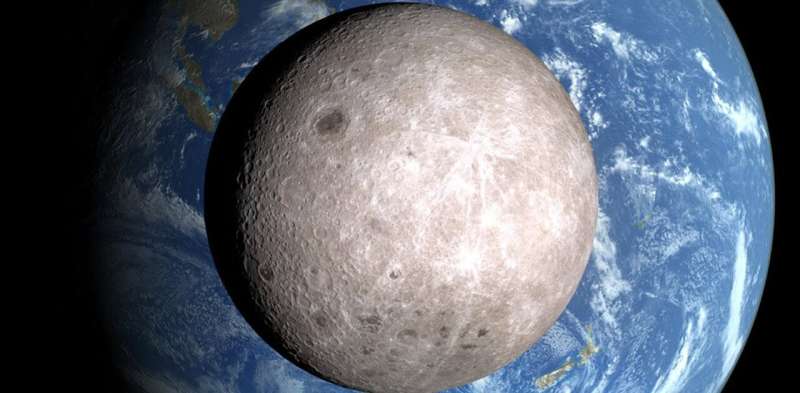
Lunar exploration is undergoing a renaissance. Dozens of missions, organized by multiple space agencies—and increasingly by commercial companies—are set to visit the moon by the end of this decade. Most of these will involve small robotic spacecraft, but NASA's ambitious Artemis program, aims to return humans to the lunar surface by the middle of the decade.
There are various reasons for all this activity, including geopolitical posturing and the search for lunar resources, such as water-ice at the lunar poles, which can be extracted and turned into hydrogen and oxygen propellant for rockets. However, science is also sure to be a major beneficiary.
The moon still has much to tell us about the origin and evolution of the solar system. It also has scientific value as a platform for observational astronomy.
Rare solar eclipse to cross remote Australia, Indonesia
